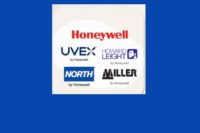What is the scope of your responsibilities as CMO?
In this new role I will direct HSP’s global efforts in developing and executing our strategic marketing initiatives. These include leading growth strategies across all product lines and regions, directing overall branding and communications and building the solid, sustaining teams and marketing capabilities to win in safety.
What are your biggest challenges?
This new entity we are creating called Honeywell Safety Products is now the largest global player within the PPE space, with more leading brands in more product categories than any other company. This presents a landscape rich in opportunity for both our customers and user communities around the world.
The challenge rests in our ability to be big, but at the same time act local and connected with our users. We have assembled the global teams around well-defined priorities and have placed the user square in the center of all that we do. The incredible progress we have made merging the core competencies and cultures of our three legacy companies: Sperian, Norcross and Honeywell, has helped place the emphasis back on being local and supplying superior service and expertise to our users wherever and whenever needed.
In fact, the camaraderie of the teams was nearly instantaneous. After a very short period of time —less than six months — all talk of “us and them” ceased and all teams have been engaged and focused on our customers and users. I have never seen a quicker assimilation in my professional career. It speaks to the quality and rigor of the Honeywell process and the customer-focused entrepreneurial approach of the Honeywell Life Safety Senior Management Team.
The biggest challenge specific to my role will be orchestrating the sum of all the parts so they work together as one unified face to the customer and user. Think of how lucky we are to have access to all the best practices and best-in-class assets from Sperian, Uvex, Miller, Howard Leight, North and Honeywell — and have the ability to bring them all together in one unique value proposition. It is daunting but we will get it right by ensuring those closest to point of usage of our products establish the context for our strategies and provide the constant thread running through all of our actions. User-focused innovation driving more relevant products and services that in turn better protect the worker and industry. That is the mission and my job is to ensure we keep focused on it.
So Dave, prioritization and execution with users at the center of all we do. Can’t get simpler than that.
A number of ISHN PPE advertisers tell us they are having good sales years. This despite the lousy economy and construction in the dumps. How do you account for at least fairly healthy PPE sales?
First, Dave, I feel it depends on whom you speak with. It certainly appears that within the majority of my industry contacts the top suppliers have grown the past couple of years since the precipitous downturn in 2009. This has been true for both the legacy Sperian business as well as the legacy North and Norcross businesses.
But this is not a universal. Many suppliers still have not reached the former sales levels prior to the downturn and most likely never will due to a host of factors. These include concentration of strength through further consolidation, continued investment through the downturn by some and none by others, and simply better management and prioritization of assets during the downturn that allowed many to emerge leaner and more focused.
Some manufacturers hunkered down and limped out of the downturn while others invested and jumped back into the market like a coiled spring with new ideas, programs and products. Honeywell came out of the downturn strong in its own right and then double-downed with the Sperian acquisition. This is a clear signal that Honeywell is invested in safety and in it for the long haul.
You mention construction being in the dumps, which is an understatement. How we managed this vertical market illustrates many of the points mentioned earlier. During the downturn, when unemployment in construction touched 27%, senior management more than doubled their investment in construction with a vastly expanded sales force and a team of strategic marketing folks with VP level focus. This investment yielded much closer intimacy with the construction user and a whole host of unique products and services from specific training and websites to on-site demonstration trailers that are best-in-class.
During the worst year in construction, every single metric was surpassed and short-term sales were the most robust in the division. HSP management is continuing to invest in construction due to the strong foundation established as well as the long-term prospects for this critical vertical market. It takes courage to invest when times are tough and this, along with the Sperian acquisition, are good examples of management’s long-term view for safety.
Other factors: a weak dollar has driven manufacturing; some segments have remained healthier than the overall average such as government, military and oil and gas. Also, industry every year is winning more converts to the premise that safety can be a profit center when a broader, more holistic view of safety “savings” is adopted. When you open the aperture of the lens and you view safety not just as a necessary product cost but include insurance premiums, lost work days, productivity gains and workers that want to remain at a company that truly cares about their well-being, you quickly evolve from cost to profit in nearly every model we look at. This in turn drives additional investments in safety.
How is Honeywell Safety performing this year?
As I expressed above, we are having a remarkable year. Sales are up and we are on plan to exceed our commitments to the corporation. I never would have believed we would be where we are only one year since the acquisition. Honeywell has a tried and true formula for acquisitions and transitions that is structured and highly disciplined. We are on track to exceed both our operating targets as well as our transition targets for the year.
The U.S. PPE market is very mature. Does the profitable future of the PPE market reside in Asia Pacific, Russia, China, Brazil, India and other developing manufacturing nations?
First, Dave I want to dispel the myth that the U.S. PPE market is mature. For existing solutions and many products this is a true statement. However, we have the largest economy on earth and if you read the OSHA injury statistics and understand that in some categories there is less than 50% compliance, you realize that the market is anything but mature. If you envision a theoretical state of zero deaths and zero injuries from where we are today and frame the paradigm around reaching this goal with new technologies, behaviors and completely new “safety systems,” you quickly realize there is abundant opportunity. This is the paradigm we choose to work under every day.
This in no way diminishes the potential we see in developing markets. Sperian and Norcross had made targeted investments within every single one of the above markets. What Honeywell now brings is an established infrastructure and global reach that is second to none in safety. We are on the ground with both bricks and mortar and teams in every developing market. We have the ability to respond to needs anywhere in the world and service global customers with more products in more countries than any, single supplier in PPE. This new global stage, brought to us with Honeywell, will drive disproportionate share gains based upon two facts. The first: in the past there was only one real global player in safety; now we have more products with more reach and are resourced to challenge every day, in every market. The second: our leverage of global accounts that want the best brands and best products no matter where the point of usage.
Do you see further consolidation in next 1-2 years of U.S. PPE industry? If so, why?
Absolutely. It’s really quite simple. Both our distributor partners and the users of our products benefit from consolidation.
For distributors, it is about being able to access a broader bundle of products with one, streamlined supply chain. For users, there is an increasing demand for resources beyond products in areas such as proper PPE selection, education and training. The supplier with a broad bundle of products tends to be more resource- and expertise-rich and more apt to deliver best-in-class products, programs and services. This speaks to improving the entire safety outcome, not just a better gadget. These needs and expectations will continue to drive demand for holistic solutions.
As Honeywell integrates Sperian and solidifies as a very diverse PPE player, what can readers expect in terms of new product intros or expansion into new PPE areas?
The synergy of the two companies is remarkable. The market leadership of Miller, Uvex and Howard Leight is now combined with the leadership of Salisbury, Fibre-Metal, North First Aid, Gloves, Respiratory, Muck Boots and the full suite of products under Honeywell First Responder. All this experience and expertise is now leveraged within one company.
The real “secret sauce”, Dave, is the enabling culture of Honeywell Life Safety. The discipline and rigor of Honeywell processes is now combined with an entreprenuiral approach and bias to action that drives a radical shift in the quantity and quality of innovations globally.
Let me provide two examples. The first is the Honeywell process of what is known as Velocity Product Development. This is a rigorous process that drives more new products faster through the innovation pipeline, all while increasing the requirements of customer input and validation at each stage. All teams around the world have been trained within the first 90 days and are driving out inefficiency in the process and applying the same principles of better, faster and more relevant products for our users whether in Smithfield, Rhode Island or Shanghai, China.
The second is a recent Global Innovation Symposium I attended with the top 100 Honeywell engineers from around the world. At the end of the Symposium, the top five PPE innovations presented as most compelling to change the industry were funded and wrapped with scientists and cross functional business teams. Suffice to say this is a new day for me and my counterparts from Sperian and the end result will be transformational products and services that will delight our users and get more workers home safely each day. We are fortunate to work in such a great industry with such a noble cause.






